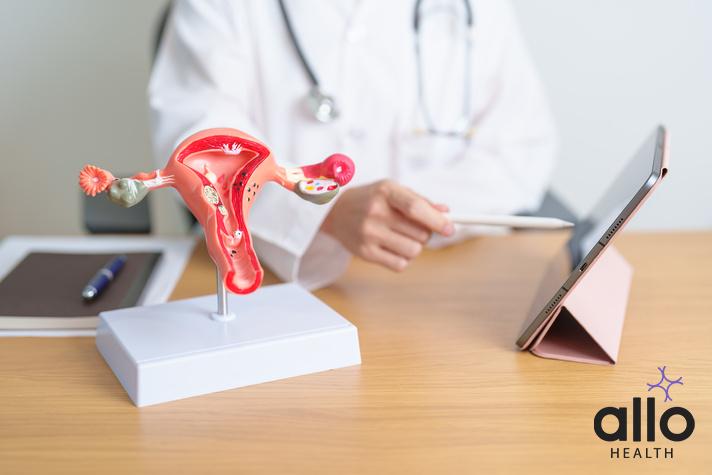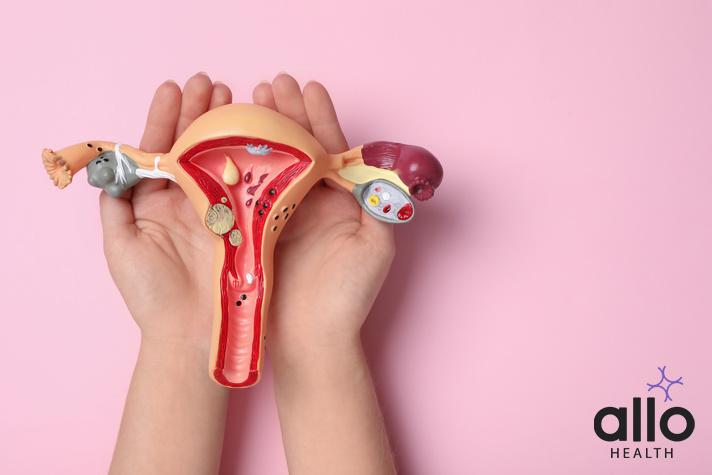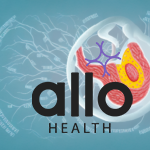Possible Stage 4 Endometriosis Life Expectancy

Allo Health is dedicated to personalized well-being, offering support and trusted information tailored to individual health goals. The platform emphasizes human-generated content, led by a distinguished medical team of experts, including physicians and sexual health specialists. Their commitment to credibility involves rigorous fact-checking, authoritative research, and continuous updates to ensure accurate, up-to-date information. Allo Health's unique approach goes beyond conventional platforms, providing expert-led insights and a continuous commitment to excellence, with user feedback playing a crucial role in shaping the platform's authoritative voice.

Dr Sanina Mansoor holds MBBS degree from Yenepoya university,Mangalore.She has 8 years of experience working as a medical officer at various health centres and medical colleges.
Why This Was Upated?
Our experts continually monitor the health and wellness space, and we update our articles when new information became available.
Updated on 16 April, 2024
- Article was updated as part of our commitment to diversity, equity, and inclusion.

"The following blog article provides general information and insights on various topics. However, it is important to note that the information presented is not intended as professional advice in any specific field or area. The content of this blog is for general educational and informational purposes only.
Book consultation
The content should not be interpreted as endorsement, recommendation, or guarantee of any product, service, or information mentioned. Readers are solely responsible for the decisions and actions they take based on the information provided in this blog. It is essential to exercise individual judgment, critical thinking, and personal responsibility when applying or implementing any information or suggestions discussed in the blog."
Endometriosis is a severe painful condition that affects around 10% of women across the world. It occurs when tissue similar to the lining of the uterus, called endometrial tissue, grows outside of the uterus. These tissue cells are known as the endometrium. Lesions of abnormal tissue may shed and become inflamed or cause cysts and scar tissue. This tissue can attach to other organs and tissues in the pelvis, causing pain, infertility, damage to the reproductive organs like the ovaries, and other complications. Lesions can also spread to the intestines and rectum. People with endometriosis may have painful and heavy menstrual bleeding, among other painful symptoms. Here in this article, we are going to learn the possible stage 4 endometriosis life expectancy, anticipated causes, symptoms and diagnosis, and many more.
What is Stage 4 Endometriosis?
Healthcare providers stage the condition depending on the lesions’ location, size, and depth. The American Society of Reproductive Medicine (ASRM) defines four stages of endometriosis.
-
Stage I:
This is also known as minimal endometriosis. In stage I, superficial implants and mild adhesions may grow outside the uterus. The point score for minimal endometriosis is between one to five.
-
Stage II:
This is also known as mild endometriosis. With stage II, the implants may be superficial or deep, with mild adhesions. Endometriosis may be widespread in stage II, and deep implants may be present. The point score for mild endometriosis is 6 to 15.
-
Stage III:
This is also known as moderate endometriosis. With stage III, deep implants are present. Also, adhesions may be dense instead of filmy and thin. The point score for moderate endometriosis is between 16–40.
-
Stage IV:
This stage of endometriosis is also known as severe endometriosis. With stage IV, deep implants and dense adhesions are present. There may be superficial endometriosis and filmy adhesions. Any score greater than 40 indicates severe endometriosis.
Endometriosis affects up to 10% of women between the ages of 15 and 44.
Endometriosis is most commonly diagnosed in tricenarian women (age 30-39). This can significantly affect reproductive health, leading to years of severe pain. Awareness of symptoms is crucial for early intervention and long-term treatment of endometriosis for overall well-being.
In addition to pain, women reported that the endometriosis-related experiences that most negatively impacted their lives included depression or anxiety (80%), heavy menstrual bleeding (71%), endometriosis pain, the need to take prescription treatments (57%) or undergo multiple surgeries (49%) or infertility (46%).
What Causes Endometriosis?
Previously, cases of endometriosis were reported mainly in the foreign provinces.
At least 11% of women, or more than 6 ½ million women in the United States, have endometriosis.
But currently, with every passing day, many cases are getting reported in India, not only in the urban culture but also in the rural lifestyle. Present-day scenario recognizes and acknowledges Endometriosis as a feminine health issue and is trying to diagnose it worldwide.
Several theories attempt to explain the causes of endometriosis, with some researchers suggesting that prolonged exposure to high-stress conditions or environmental factors like pollution may play a role. Stress impacts the body in severe ways, and psychology also. Increasing pollution causes pulmonary diseases and impacts sexual health. The environment that we live in is very important to be less polluted to sustain a healthy lifestyle.
One such theory is that during menstruation, some of the menstrual blood flows back up through the fallopian tubes into the pelvic cavity, where it can implant and grow.

Another theory is that endometrial tissue can spread through the bloodstream or lymphatic system to other parts of the body.
It is important to note that while the exact cause of endometriosis is still unknown, there are several treatment options available to manage the symptoms and improve the quality of life for an endometriosis patient. Treatment of endometriosis may include medication, Laparoscopic surgery, or a combination of both, and should be discussed with a healthcare provider.
What are the Different Stages of Endometriosis?
There are four stages of endometriosis, ranging from mild to severe, as discussed above. In stage 1, there are small implants or patches of endometrial tissue on the pelvic lining or ovaries. In stage 2, there are more and larger patches of tissue. In stage 3, there are many deep implants and adhesions (bands of scar tissue) that can affect the function of the ovaries and other organs. In stage 4, there are extensive adhesions and implants, and the pelvic organs may be distorted or fused.
Diagnosis of Endometriosis
Endometriosis can be tricky to diagnose, as the symptoms can be similar to other conditions. Diagnosis usually requires surgical treatment, such as laparoscopy, a minimally invasive procedure where a thin, lighted scope is inserted to examine the pelvic cavity.
Another diagnostic tool that may be used is a pelvic exam, and a healthcare provider manually examines the pelvic area for signs of endometriosis. However, this method is not always effective in diagnosing endometriosis, as the condition can be difficult to detect without visual confirmation through laparoscopy.
What Are the Symptoms of Stage 4 Endometriosis?
The symptoms of stage 4 endometriosis can vary from person to person. Still, they may include severe pelvic pain that doesn’t go away with over-the-counter medication, heavy or intense menstrual cramps, very heavy or prolonged periods, pelvic pain during or after sex, infertility, painful bowel movements, and fatigue.
In addition to these symptoms, some women with stage 4 endometriosis may also experience bladder and urinary tract problems, such as painful urination or blood in the urine. They may also have gastrointestinal issues, such as diarrhea, constipation, or nausea. It’s important to note that all women with stage 4 endometriosis mayn’t experience all of these symptoms, and some may have no symptoms at all.
How is Stage 4 Endometriosis Treated?

There are various diagnosis of endometriosis including surgery to remove the affected tissue, hormone therapy to help manage your menstrual cycle and the growth of endometrial tissue, or pain management with medications.
In addition to these treatments, lifestyle changes can also help manage symptoms of stage 4 endometriosis. Endometriosis patients should try regular exercise, follow a healthy diet, and stress management techniques such as yoga or meditation which may help alleviate pain and discomfort.
Slower styles of yoga, such as restorative yoga, yin yoga, and hatha yoga can increase the life expectancy of a stage 4 endometriosis patient. These styles all help to gently create more space and relaxation in the pelvic area, as well as calm the mind.
It is important to work closely with your healthcare provider to determine the best course of treatment for your individual needs. In some cases, a combination of treatments may be necessary to effectively manage symptoms and improve quality of life.
Can Stage 4 Endometriosis be Cured?
Early detection and treatment can help prevent complications and improve quality of life. Effective management through a combination of medical and lifestyle interventions can significantly improve the quality of life for individuals dealing with the condition.
It is important to note that the severity of endometriosis does not necessarily correlate with the level of pain or symptoms experienced by the individual. Some women with stage 4 endometriosis may experience little to no pain, while others with milder forms of the condition may experience severe pain and discomfort. Therefore, individuals must communicate their symptoms and concerns with their healthcare provider to receive the most appropriate and effective treatment plan.
Coping Strategies for Living with Stage 4 Endometriosis
It’s also important to prioritize self-care and take time for yourself for women with endometriosis. This may include activities like meditation, yoga, or taking a relaxing bath. This can help in decreasing the stress levels and increasing the life expectancy of a stage 4 endometriosis patient.
Understanding the Link Between Endometriosis and Infertility
Endometriosis may make the fertilization process of the egg, difficult. Some women with endometriosis may have difficulties while conceiving, whereas others may not. That depends upon the individual body. Treatments like fertility treatment, infertility medications, assisted reproductive technologies like IVF, or surgery are there to remove the affected tissue.
The Role of a Healthy Lifestyle in Managing Endometriosis Symptoms
Adopting a healthy, less stressful lifestyle can complement the healing process. Eating a balanced diet, getting regular exercise, getting enough sleep, and managing stress can all go a long way in improving quality of life.
Foods that are high in trans fats and processed sugars have been linked to increased inflammation and pain, while foods rich in omega-3 fatty acids and antioxidants have been shown to have anti-inflammatory effects. Individuals with endometriosis need to work with a healthcare provider, professional help, or registered dietitian to develop a personalized nutrition plan that supports their overall health and well-being. You should consider visiting the consultants for medical treatment.
Most Asked Questions
-
What is Stage 4 Endometriosis, and how is it different from other stages?
Stage 4 endometriosis is the most severe stage of the condition, as classified by the American Society of Reproductive Medicine (ASRM) staging system. In Stage 4, endometrial tissue has deeply infiltrated pelvic organs and tissues, potentially impacting structures like the ovaries, fallopian tubes, bladder, and rectum. This stage is characterized by extensive adhesions and can lead to severe symptoms, such as chronic pelvic pain and fertility issues, differentiating it from less advanced stages.
-
What are the common symptoms associated with Stage 4 Endometriosis?
Stage 4 endometriosis is associated with a range of severe symptoms, including chronic pelvic pain, dyspareunia (painful intercourse), infertility, gastrointestinal issues (such as bloating and bowel discomfort), urinary symptoms, and persistent fatigue. These symptoms can significantly impact a person's quality of life and may require a combination of medical and surgical interventions for effective management.
-
How is Stage 4 Endometriosis diagnosed?
Diagnosis of Stage 4 endometriosis often involves a combination of methods. A healthcare provider may take a detailed medical history, conduct a physical examination, and order imaging studies. However, the gold standard for diagnosing endometriosis, including its stage, is through laparoscopic surgery. During this procedure, the surgeon can directly visualize and assess the extent of endometrial implants, adhesions, and other abnormalities in the pelvic region.
-
What are the available treatment options for Stage 4 Endometriosis?
Managing Stage 4 endometriosis typically involves a combination of medical and surgical interventions. Pain medications, such as nonsteroidal anti-inflammatory drugs (NSAIDs), can help manage symptoms. Hormonal therapies, like oral contraceptives, progestins, and GnRH agonists, aim to suppress estrogen production and alleviate symptoms. In severe cases, surgical intervention, either through laparoscopy or open abdominal surgery, may be necessary to remove endometrial tissue, cysts, and adhesions.
-
How does Stage 4 Endometriosis impact fertility, and what are the available options for those trying to conceive?
Stage 4 endometriosis is associated with a higher risk of infertility due to the extensive damage and scarring of reproductive organs. Fertility treatments, such as in vitro fertilization (IVF), may be recommended for those trying to conceive. Individuals facing fertility challenges need to consult with reproductive endocrinologists who can provide personalized guidance and explore options like fertility preservation.






































